Abstract
1 A method for measuring propranolol concentrations in plasma has been modified to permit estimations to be made on small volumes. The method has been used to correlate blockade of heart rate increases in response to intravenous isoprenaline, in both young and adult rabbits, with plasma concentrations of propranolol after subcutaneous injections of 2 or 4 mg/kg. It has been found that the relation between beta-adrenoceptor blockade and plasma concentrations is the same in rabbits as that determined by previous workers in man. 2 Adult Dutch dwarf rabbits were treated for 9 weeks twice daily subcutaneously with 2 mg/kg propranolol, or 10 mg/kg practolol, or with saline. 3 The treatment caused no change in heart weight in relation to body weight or in the water content of the hearts, in contrast to effects previously observed in young rabbits. 4 As in the young rabbits, treatment did cause a prolongation of action potential duration, as measured with intracellular electrodes in hearts of animals killed 24 h after the last dose of drug. 5 In another series of experiments, with a similar regime of treatment for 6 weeks, a significant reduction of diastolic blood pressure was observed in the propranolol group. 6 During the course of treatment and at the end, there was no change in the heart-rate increases observed in response to intravenous isoprenaline administered not less than 15 h after the previous dose of beta-blockers. Thus no functional alteration in sensitivity ot beta-adrenoceptor stimulation was apparent.
Full text
PDF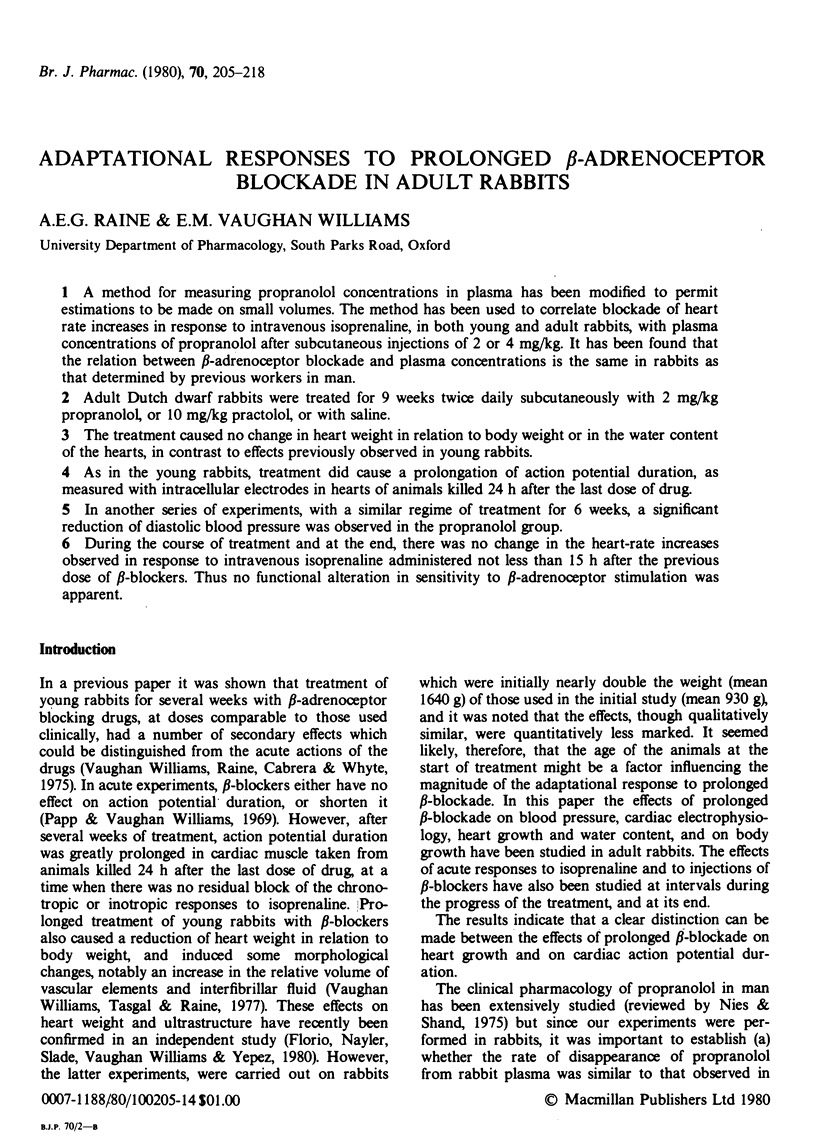
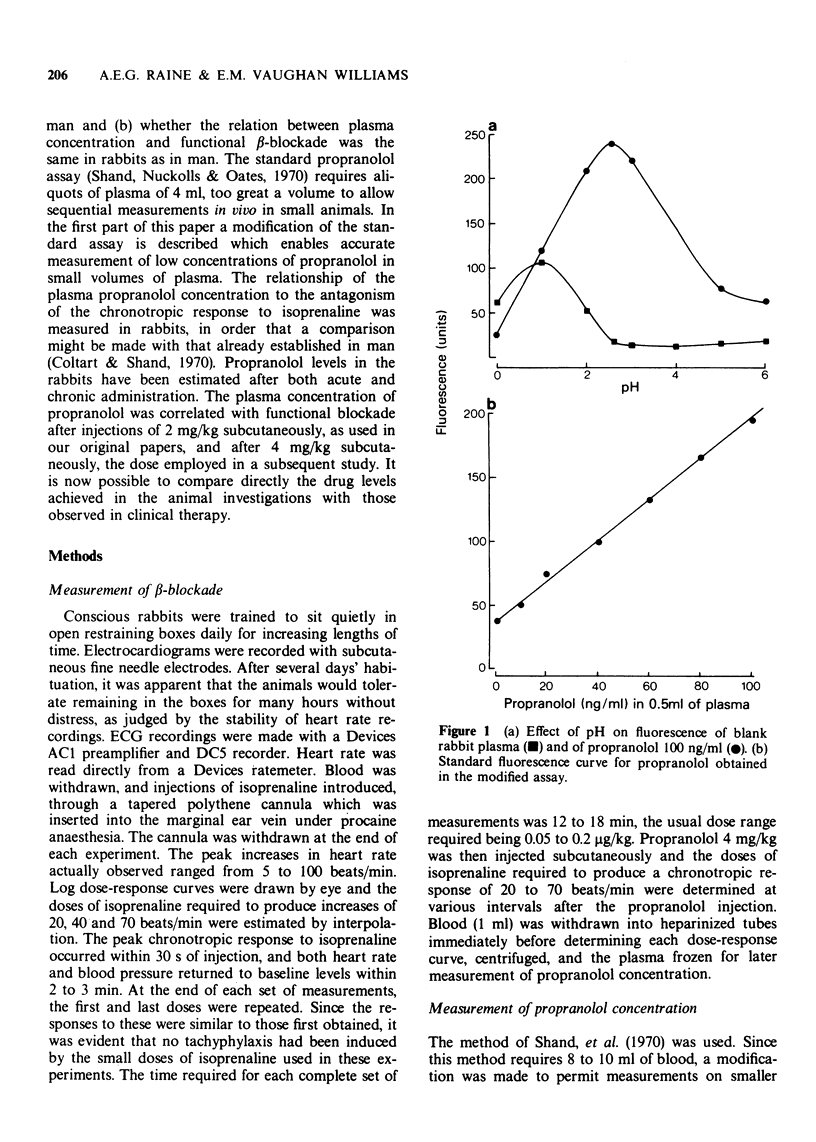
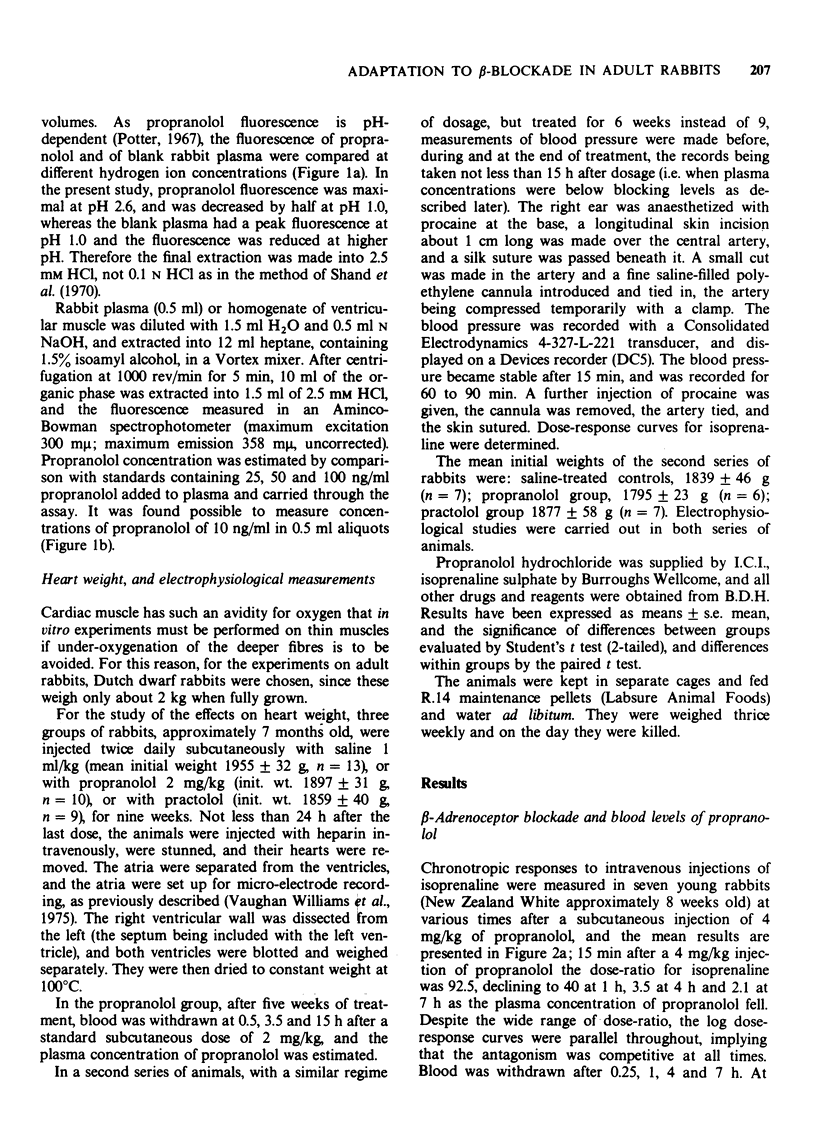


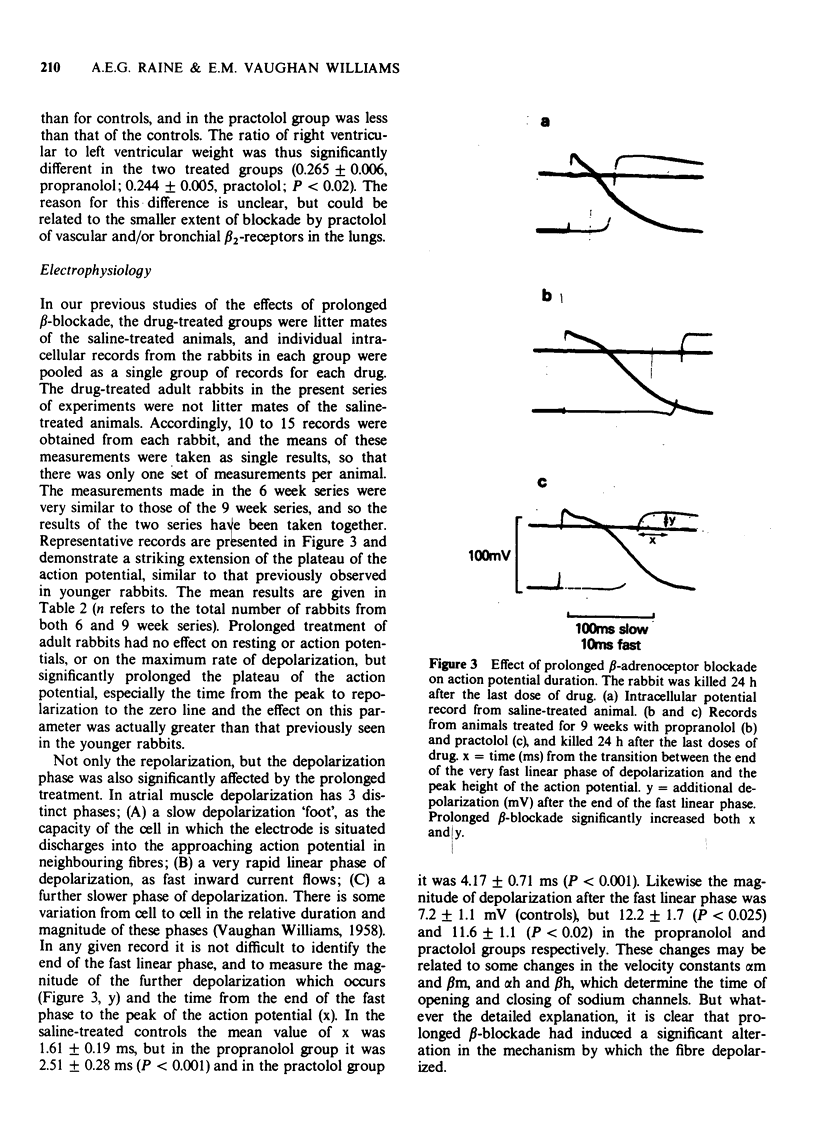
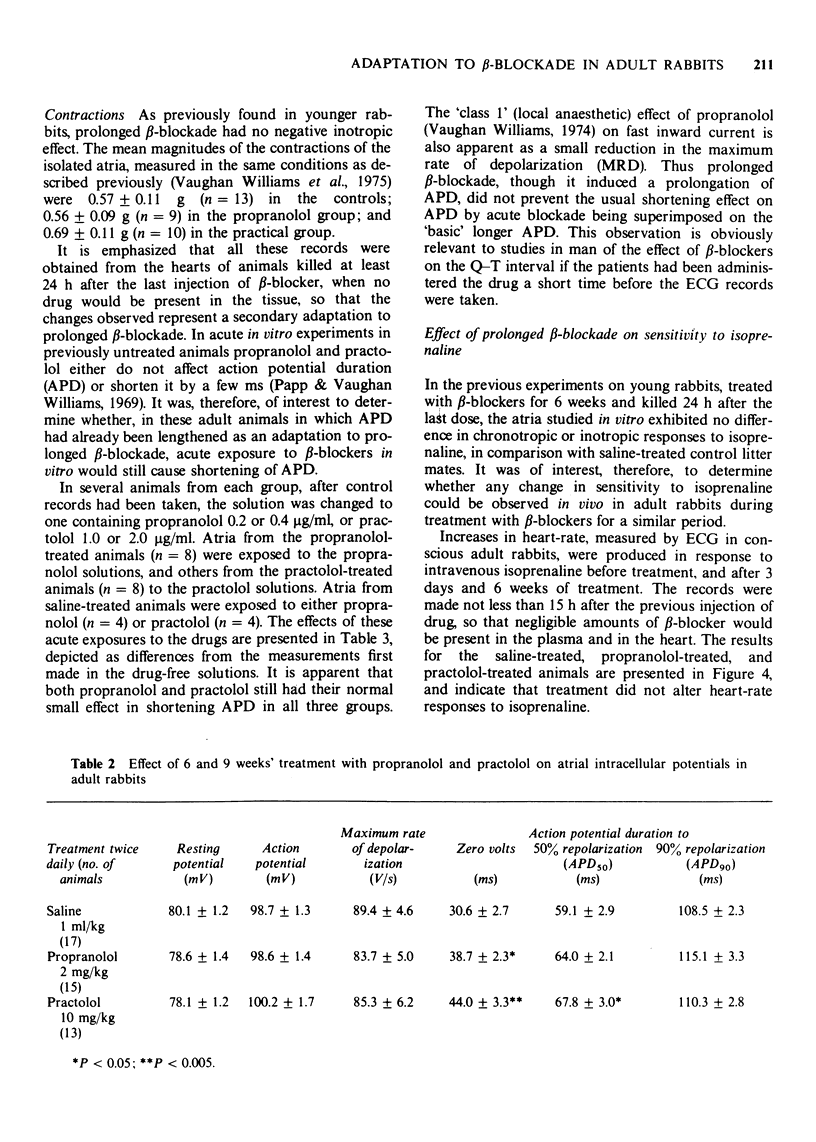
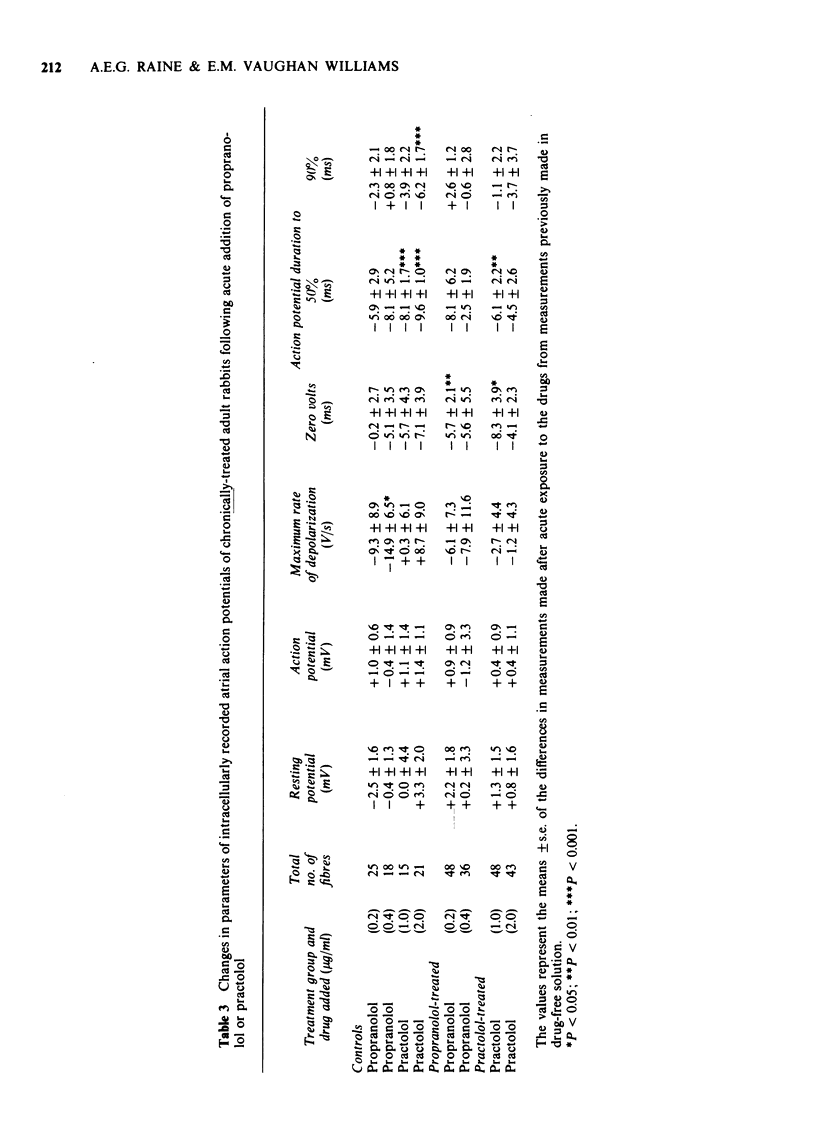
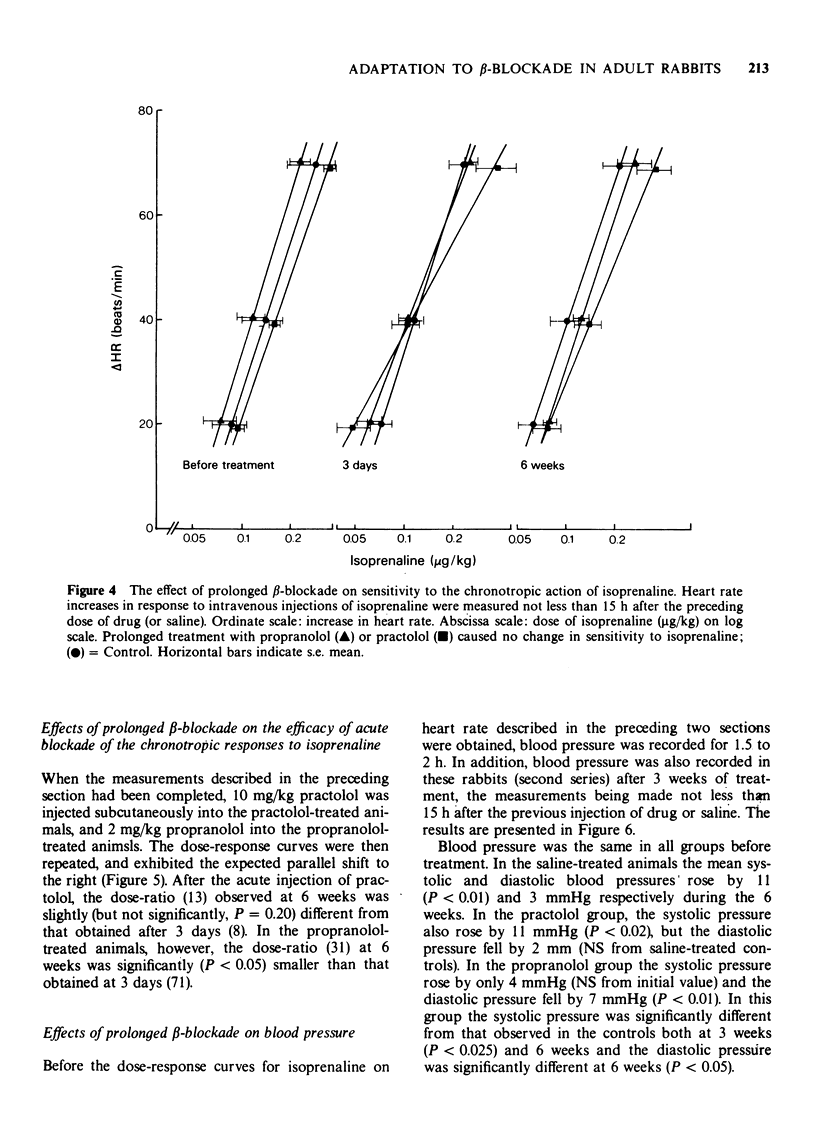
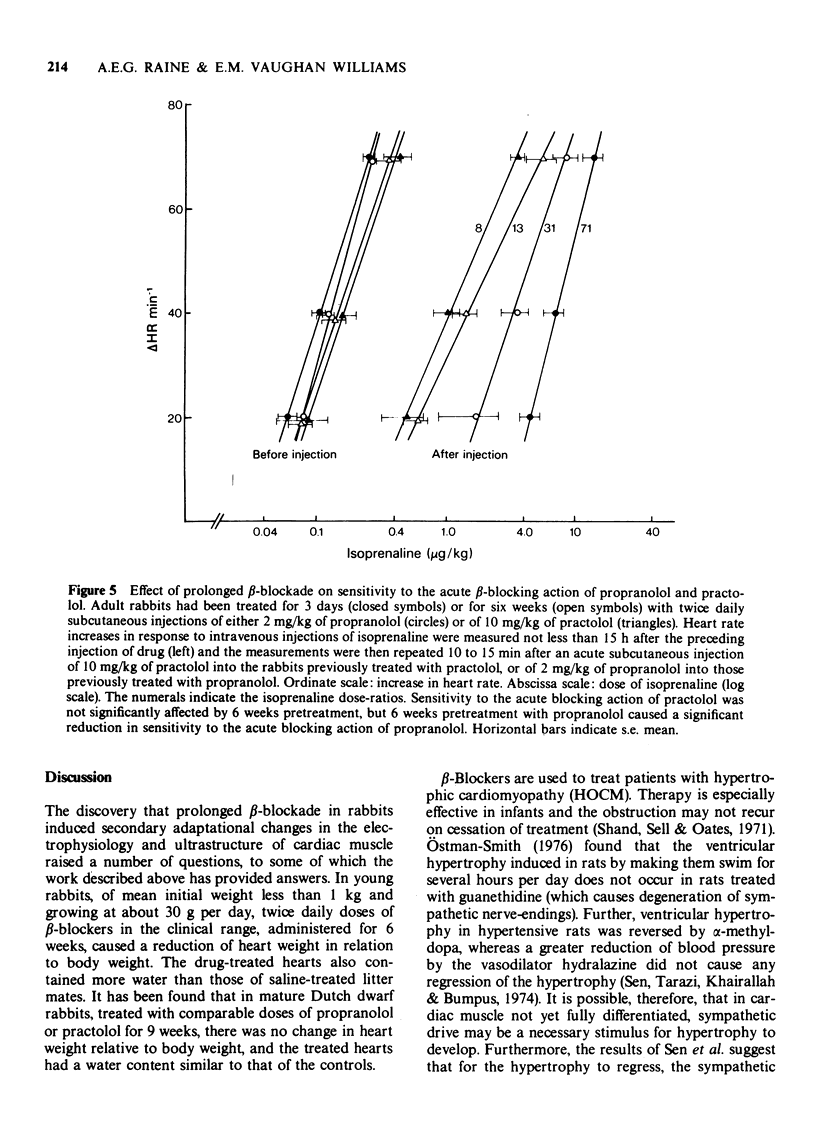
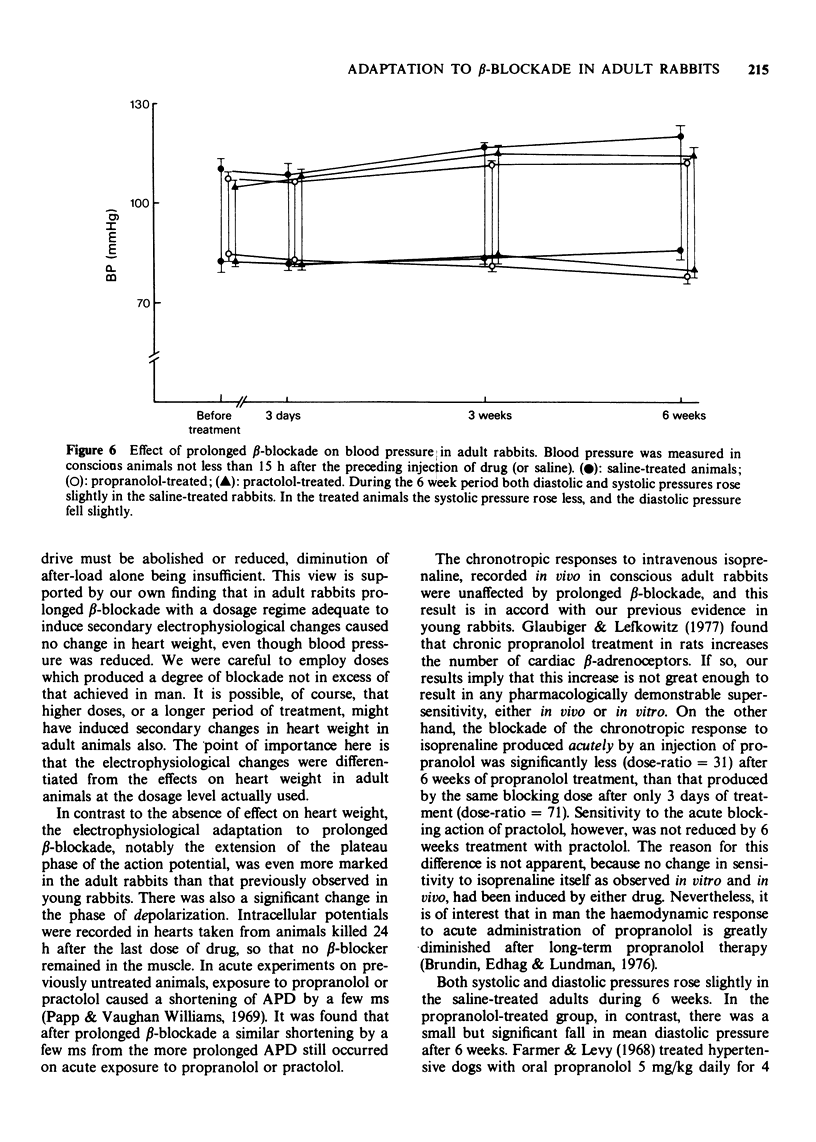
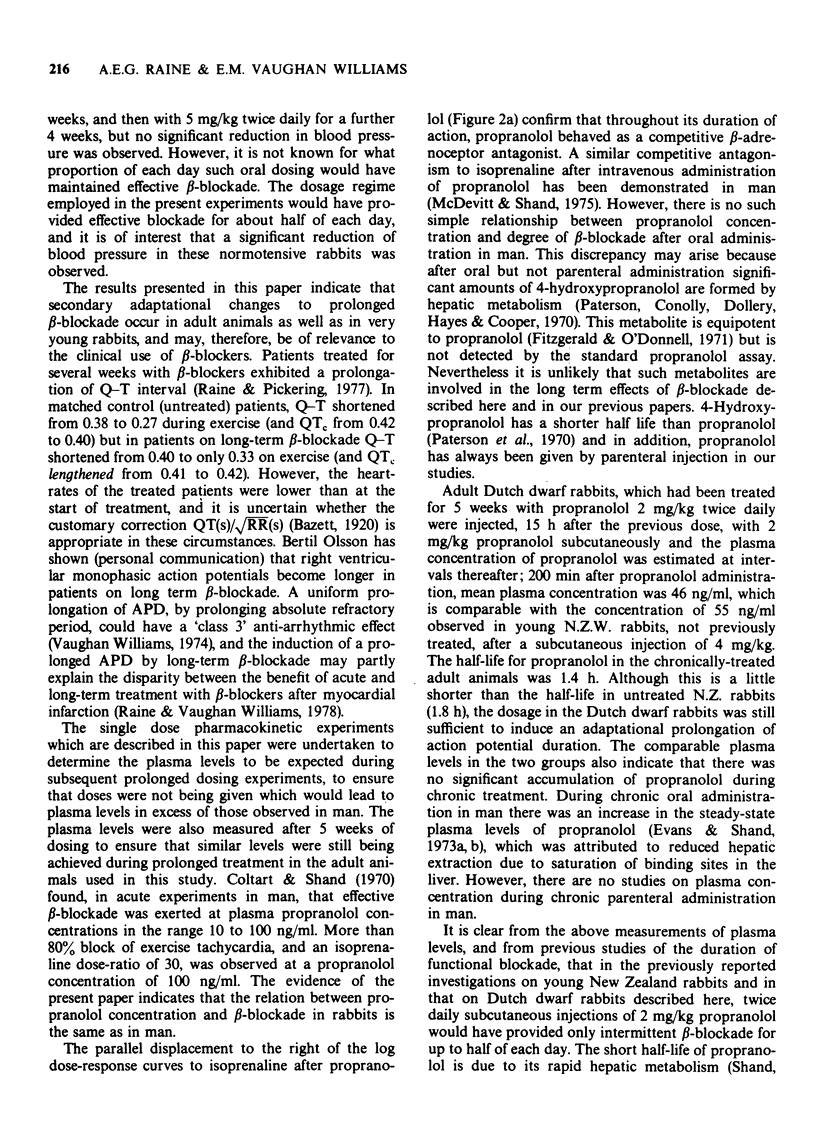
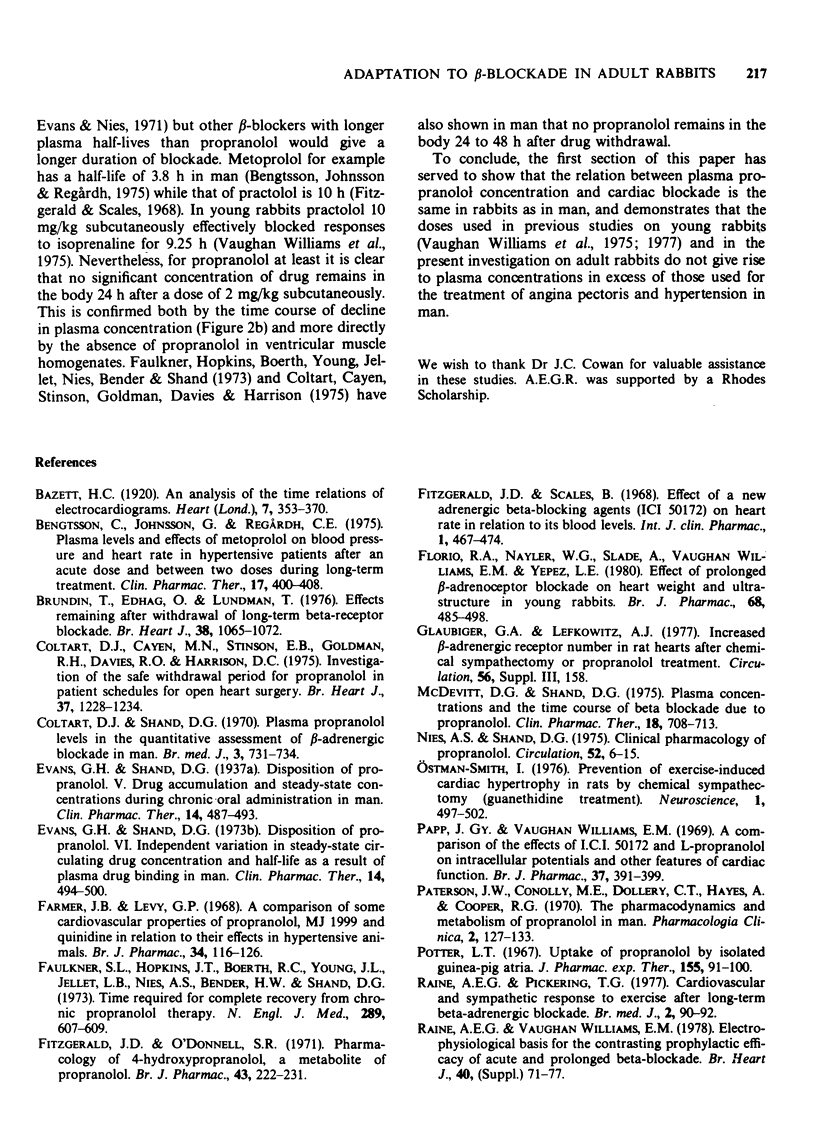
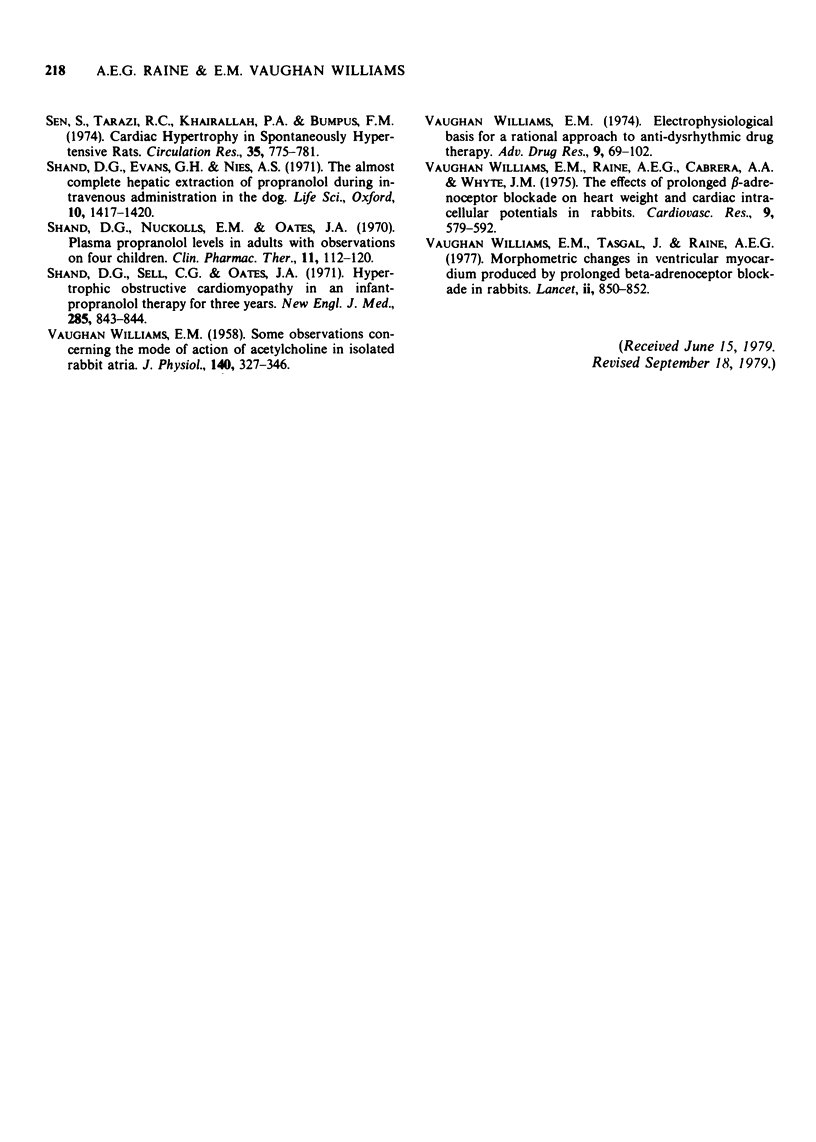
Selected References
These references are in PubMed. This may not be the complete list of references from this article.
- Bengtsson C., Johnsson G., Regårdh C. G. Plasma levels and effects of metoprolol on blood pressure and heart rate in hypertensive patients after an acute dose and between two doses during long-term treatment. Clin Pharmacol Ther. 1975 Apr;17(4):400–408. doi: 10.1002/cpt1975174400. [DOI] [PubMed] [Google Scholar]
- Brundin T., Edhag O., Lundman T. Effects remaining after withdrawal of long-term beta-receptor blockade. Reduced heart rate and altered haemodynamic response to acute propranolol administration. Br Heart J. 1976 Oct;38(10):1065–1072. doi: 10.1136/hrt.38.10.1065. [DOI] [PMC free article] [PubMed] [Google Scholar]
- Coltart D. J., Cayen M. N., Stinson E. B., Goldman R. H., Davies R. O., Harrison D. C. Investigation of the safe withdrawal period for propranolol in patients scheduled for open heart surgery. Br Heart J. 1975 Dec;37(12):1228–1234. doi: 10.1136/hrt.37.12.1228. [DOI] [PMC free article] [PubMed] [Google Scholar]
- Coltart D. J., Shand D. G. Plasma propranolol levels in the quaniitative assessment of beta-adrenergic blockade in man. Br Med J. 1970 Sep 26;3(5725):731–734. doi: 10.1136/bmj.3.5725.731. [DOI] [PMC free article] [PubMed] [Google Scholar]
- Evans G. H., Shand D. G. Disposition of propranolol. V. Drug accumulation and steady-state concentrations during chronic oral administration in man. Clin Pharmacol Ther. 1973 Jul-Aug;14(4):487–493. doi: 10.1002/cpt1973144part1487. [DOI] [PubMed] [Google Scholar]
- Evans G. H., Shand D. G. Disposition of propranolol. VI. Independent variation in steady-state circulating drug concentrations and half-life as a result of plasma drug binding in man. Clin Pharmacol Ther. 1973 Jul-Aug;14(4):494–500. doi: 10.1002/cpt1973144part1494. [DOI] [PubMed] [Google Scholar]
- Farmer J. B., Levy G. P. A comparison of some cardiovascular properties of propranolol, MJ 1999 and quinidine in relation to their effects in hypertensive animals. Br J Pharmacol. 1968 Sep;34(1):116–126. doi: 10.1111/j.1476-5381.1968.tb07955.x. [DOI] [PMC free article] [PubMed] [Google Scholar]
- Faulkner S. L., Hopkins J. T., Boerth R. C., Young J. L., Jr, Jellett L. V., Nies A. S., Bender H. W., Shand D. G. Time required for complete recovery from chronic propranolol therapy. N Engl J Med. 1973 Sep 20;289(12):607–609. doi: 10.1056/NEJM197309202891204. [DOI] [PubMed] [Google Scholar]
- Fitzgerald J. D., O'Donnell S. R. Pharmacology of 4-hydroxypropranolol, a metabolite of propranolol. Br J Pharmacol. 1971 Sep;43(1):222–235. doi: 10.1111/j.1476-5381.1971.tb07171.x. [DOI] [PMC free article] [PubMed] [Google Scholar]
- Fitzgerald J. D., Scales B. Effect of a new adrenergic beta-blocking agent (ICI 50,172) on heart rate in relation to its blood levels. Int Z Klin Pharmakol Ther Toxikol. 1968;1(6):467–474. [PubMed] [Google Scholar]
- Jones C. J., Mann G. E., Smaje L. H. The role of cyclic nucleotides and related compounds in nerve-mediated vasodilatation in the cat submandibular gland. Br J Pharmacol. 1980 Mar;68(3):485–497. doi: 10.1111/j.1476-5381.1980.tb14563.x. [DOI] [PMC free article] [PubMed] [Google Scholar]
- McDevitt D. G., Shand D. G. Plasma concentrations and the time-course of beta blockade due to propranolol. Clin Pharmacol Ther. 1975 Dec;18(6):708–713. doi: 10.1002/cpt1975186708. [DOI] [PubMed] [Google Scholar]
- Nies A. S., Shand D. G. Clinical pharmacology of propranolol. Circulation. 1975 Jul;52(1):6–15. doi: 10.1161/01.cir.52.1.6. [DOI] [PubMed] [Google Scholar]
- Ostman-Smith I. Prevention of exercise-induced cardiac hypertrophy in rats by chemical sympathectomy (guanethidine treatment). Neuroscience. 1976 Dec;1(6):497–507. doi: 10.1016/0306-4522(76)90102-0. [DOI] [PubMed] [Google Scholar]
- Papp J. G., Williams E. M. A comparison of the anti-arrhythmic actions of I.C.I. 50172 and (--)-propranolol and their effects on intracellular cardiac action potentials and other features of cardiac function. Br J Pharmacol. 1969 Oct;37(2):391–399. doi: 10.1111/j.1476-5381.1969.tb10576.x. [DOI] [PMC free article] [PubMed] [Google Scholar]
- Potter L. T. Uptake of propranolol by isolated guinea-pig atria. J Pharmacol Exp Ther. 1967 Jan;155(1):91–100. [PubMed] [Google Scholar]
- Raine A. E., Pickering T. G. Cardiovascular and sympathetic response to exercise after long-term beta-adrenergic blockade. Br Med J. 1977 Jul 9;2(6079):90–92. doi: 10.1136/bmj.2.6079.90. [DOI] [PMC free article] [PubMed] [Google Scholar]
- Sen S., Tarazi R. C., Khairallah P. A., Bumpus F. M. Cardiac hypertrophy in spontaneously hypertensive rats. Circ Res. 1974 Nov;35(5):775–781. doi: 10.1161/01.res.35.5.775. [DOI] [PubMed] [Google Scholar]
- Shand D. G., Evans G. H., Nies A. S. The almost complete hepatic extraction of propranolol during intravenous administration in the dog. Life Sci I. 1971 Dec 15;10(24):1417–1421. doi: 10.1016/0024-3205(71)90271-2. [DOI] [PubMed] [Google Scholar]
- Shand D. G., Nuckolls E. M., Oates J. A. Plasma propranolol levels in adults with observations in four children. Clin Pharmacol Ther. 1970 Jan-Feb;11(1):112–120. doi: 10.1002/cpt1970111112. [DOI] [PubMed] [Google Scholar]
- Shand D. G., Sell C. G., Oates J. A. Hypertrophic obstructive cardiomyopathy in an infant--propranolol therapy for three years. N Engl J Med. 1971 Oct 7;285(15):843–844. doi: 10.1056/NEJM197110072851507. [DOI] [PubMed] [Google Scholar]
- WILLIAMS E. M. Some observations concerning the mode of action of acetylcholine in isolated rabbit atria. J Physiol. 1958 Mar 11;140(3):327–346. [PMC free article] [PubMed] [Google Scholar]
- Williams E. M., Raine A. E., Cabrera A. A., Whyte J. M. The effects of prolonged beta-adrenoceptor blockade on heart weight and cardiac intracellular potentials in rabbits. Cardiovasc Res. 1975 Sep;9(5):579–592. doi: 10.1093/cvr/9.5.579. [DOI] [PubMed] [Google Scholar]
- Williams E. M., Tasgal J., Raine A. E. Morphometric changes in rabbit ventricular myocardium produced by long-term beta-adrenoceptor blockade. Lancet. 1977 Oct 22;2(8043):850–852. doi: 10.1016/s0140-6736(77)90784-x. [DOI] [PubMed] [Google Scholar]


